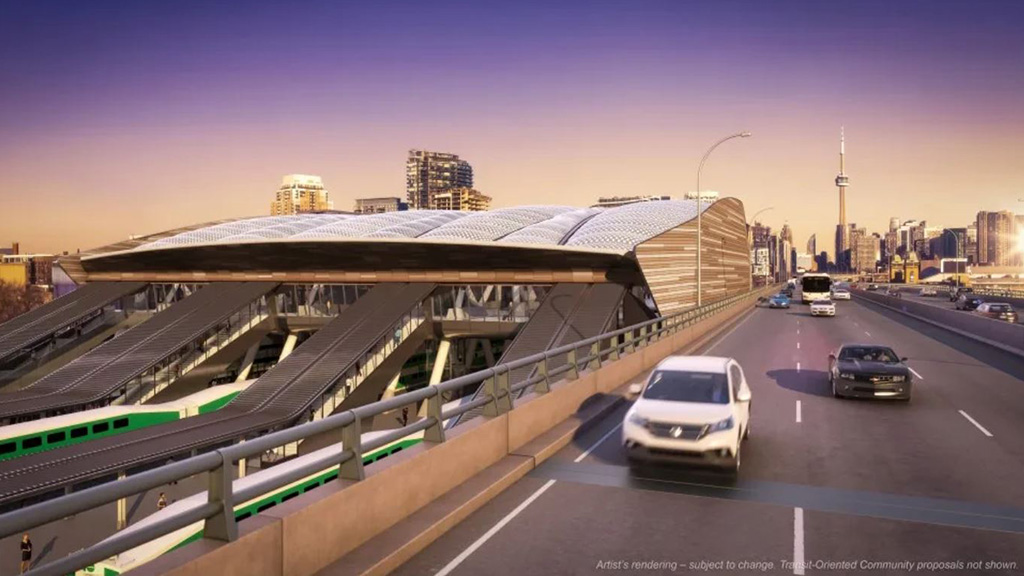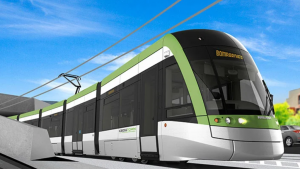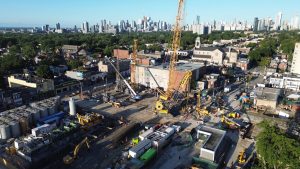When it comes to including community benefits on the Ontario Line, the train has not left the building.
That was the message from Karla Avis-Birch, chief planning officer at Metrolinx, during a recent Ontario Line Emergency Community Benefits Agreement Town Hall meeting hosted by the Toronto Community Benefits Network (TCBN).
“We are here, there is work to be done for sure. There is continuous improvements that we are always looking to make and have in partnership with all of you,” she said.
“We hear you. We are here today, we have been here, we will continue to be here.”
The Ontario Line is a 15.6-kilometre subway line that will bring 15 new stations to the city from Exhibition Place to the Ontario Science Centre. It is estimated the project cost could be as high as $19 billion.
The main issue brought up at the meeting is that two of the contracts have been awarded and there is no mention of community benefits.
“There are specific systems, specific discussions, specific collaboration that we are doing with those partners behind the scenes, not out in plain sight, but in our day-to-day work to make sure that they understand the expectation of the targets, that they understand how we want to work with them to deliver these benefits,” Avis-Birch said.
Rosemarie Powell, executive director of the TCBN, pointed out in a letter Metrolinx committed to requiring 10 per cent for equity, diversity and inclusion and 10 per cent for women.
“The problem is we don’t see it in writing anywhere where it actually counts, in the contracts with the project contractor,” said Powell. “If you search that 1,378-page document you will not see a mention of community benefits on it. And I know you guys know contracts. If it’s not in the contract, it ain’t going to happen.”
Following the presentation, Powell asked Avis-Birch point blank: is the Ontario Line going to have a formal community benefits agreement in place?
“We are working with all of our contractors,” said Avis-Birch. “As we wrote back to you in a letter, we are committing to our four-pillar strategy and targets. There are contracts that have been let before we have put in specific language…but we continue to work with them directly. We have communications with them daily and we reiterate the requirements, the expectation of us working together on the aspirational target.”
The four-pillar approach is as follows, Avis-Birch explained.
“Pillar one is about jobs…it’s where we are setting targets: 10 per cent target for BIPOC participation and 10 per cent participation of women into the projects that we are delivering,” said Avis-Birch. “It also includes apprenticeship program work plans that we are working with our contractors to see and review and talk about. But, more importantly, connect with TCBN, connect with other local community groups, connect with the BIAs to make sure that those connections are made so those opportunities, that access is easily available, and those benefits are realized.”
Pillar two is about local business supports and understanding the impact through the construction period and beyond.
“With our contractors we encourage them strongly, work with them, connect with them to not only use those businesses in the area in which they are working, but also be very mindful to mitigate and even remove as much as we can all of the impact…dust and noise,” said Avis Birch.
“(We’re also) working directly with the BIAs to have job fairs, to have markets, to promote those businesses, to use our social platforms, to leverage our website, our community consultation meetings…to really understand where those businesses are, understand those impacts, continue to listen and make the adjustments where we can.”
Pillar three and four move into the actual impact of the design and construction.
“Those are a little bit of a mantra of leaving the community better than we found it,” explained Avis-Birch. “In pillar three and pillar four is where through the design process…we are working with the community to understand what are the impacts that we are not seeing, where can we improve upon what we intended to build and really leave a lasting impression of benefit to the community.”
The working group process also needs to be restarted, she said.
Karl Andrus from the Hamilton Community Benefits Network asked Avis-Birch when the pillars will be implemented.
“So far early demolition works contracts have gone out without pillar one being exercised at all.
“How many times are we going to have to listen to these pillars coming up that they are going to happen and when are we going to start seeing implementation of them?”
Business owners and community groups, government representatives also attended and spoke at the meeting including MPPs Peter Tabuns, Kristyn Wong-Tam and Chris Glover and Toronto City Councillors Jaye Robinson and Ausma Malik.
“We’re all stuck…because we can’t get the provincial government to talk about community benefits in a truly meaningful way that will translate into a financial compensation and investments in the community where 10 years of construction is going to be impacting and at the same time there is no real commitments to targets, not really,” said Tam.
Follow the author on Twitter @DCN_Angela











Recent Comments
comments for this post are closed